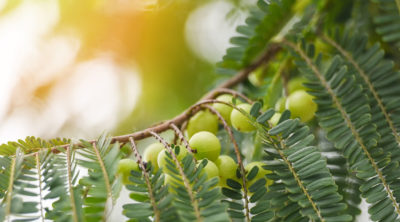Essential Facts about Wild Cardamom
Names
- Botanical: Elettaria cardamomum
- Sanskrit: Ela
- Hindi: Elaichi
- English: Wild Cardamom
- Other: Queen of Spices
Energetics
- Rasa (taste): Pungent, sweet
- Guna (qualities): Light, dry
- Virya (action): Cooling
- Vipaka (post-digestive effects): Pungent
- Dosha (constitution): Cardamom is considered tridoshic in that it can be useful in balancing all three doshas, though pitta people will probably find that they should only use it in moderation. Cardamom can reduce the influence of kapha in the stomach, which can be particularly beneficial for excess kapha. In addition, vata governs digestion, and anything that helps to stabilize digestion is a great asset to a vata-dominant individual.
Habitat
Wild cardamom is native to India and is widely found in Western Ghats of southern India.
Plant Description
Wild cardamom is a perennial plant in the ginger family that grows 2-4 m high. The leaves are dark green and sword shaped and the flowers are white or pale violet in color. The fruits are yellow-green pods filled with black and brown seeds.
Parts Used
The seeds.
Nutrients
Seeds of this herb are rich in mycrene, limonene, y-tirpinene, p-cymene, terpinole, geraneol, trans-nerodiol, hepatene, linalool, camphor, citral, farsneol and sitosterol.
Other
Cardamom is one of the priciest spices on the planet. It’s considered the third-most-expensive spice, with saffron and vanilla taking the lead.
Medicinal Uses of Wild Cardmom
Wild cardamom is a delicious and warming spice that most of us are at least somewhat familiar with. Anyone who has enjoyed a cup of chai tea has been able to taste the soothing warmth of cardamom. However, in Ayurveda, it’s also prized for its medicinal uses.
Reducing Inflammation
Wild cardamom seeds have a number of compounds in it that are known to help ward off inflammation. In small amounts, inflammation can be beneficial, encouraging your body to direct healing resources to an affected area.
In the case of chronic inflammation, however, the body is essentially attacking an area that doesn’t need to be touched. Many different anti-inflammatory actions have been found in wild cardamom.
Regulating Blood Sugar
Another thing that wild cardamom seeds can be used for is helping to regulate blood sugar levels in the body. Studies have mostly been done on rats, but it was shown that wild cardamom can help to prevent blood sugar from remaining elevated.
Fighting Cancer
Many studies have indicated that wild cardamom seeds could help to fight cancer. It can do this in a number of ways: by encouraging the body to produce cancer-fighting enzymes, enhancing the ability of natural cells to kill cancer and to discourage tumor growth.
Wild cardamom seeds are also believed to help eliminate the buildup of ama, or toxic material, in the body. In doing this, it can help to reduce the onset of sickness.
Usage and Dosage of Wild Cardamom
Wild cardamom seeds can be made into a tea, ground into a powder, or taken as a supplement. It can also be combined with other substances to increase its medicinal power. Chyawanprash, for example, uses wild cardamom in combination with alma fruit, shatavari root, bacopa leaf, ginger, turmeric, holy basil and more. Talk to a local herbalist or an Ayurvedic practitioner to figure out how to best to use this herb for your health and wellness.
Reviewed by Dr. Jayant Lokhande, MD (Botanical Drugs), MBA (Biotechnology)



